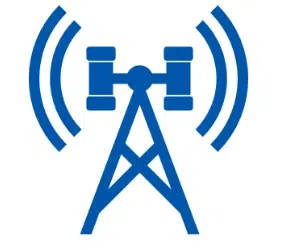Yes, cell towers can be used for edge computing, and this concept is commonly referred to as “edge computing at the cell tower” or “edge cloud.” Edge computing involves processing data closer to the source of data generation or consumption, reducing latency and improving the performance of applications and services. Cell towers provide an ideal infrastructure for edge computing due to their strategic location, connectivity, and proximity to end-users. Here’s how edge computing at cell towers works:
- Location: Cell towers are distributed throughout urban and rural areas, making them strategically positioned to serve as edge computing nodes. Their geographic distribution allows for low-latency processing and data storage closer to end-users.
- Connectivity: Cell towers are typically connected to high-speed fiber optic or backhaul networks, providing fast and reliable connectivity to the broader internet and cloud resources. This connectivity is essential for transmitting data between the edge and centralized cloud resources.
- Processing Power: Edge computing equipment, such as servers, storage devices, and edge computing hardware, can be deployed at or near cell tower sites. These resources can process and analyze data generated by nearby IoT devices, mobile users, and applications in real-time.
- Low Latency: By processing data at the edge, latency is minimized, which is critical for applications requiring near-instantaneous response times, such as augmented reality (AR), virtual reality (VR), autonomous vehicles, and IoT sensors.
- Content Delivery: Edge computing at cell towers can support content delivery networks (CDNs) that cache and serve content locally, reducing the load on central data centers and improving content delivery speeds.
- IoT and 5G: The deployment of 5G networks enhances the capabilities of edge computing at cell towers. 5G’s higher bandwidth, lower latency, and support for massive IoT enable a wide range of applications that benefit from edge processing.
- Security and Privacy: Edge computing can enhance security and data privacy by processing sensitive information locally rather than transmitting it to remote data centers. This is particularly important for applications like video surveillance and critical infrastructure monitoring.
- Scalability: Edge computing infrastructure at cell towers can be scaled up or down based on demand, ensuring that resources are allocated efficiently and cost-effectively.
- Use Cases: Edge computing at cell towers supports various use cases, including real-time analytics, IoT data processing, video analytics, and applications that require low-latency responsiveness.
- Network Slicing: Network slicing, a feature of 5G, allows operators to allocate a portion of network resources to specific edge computing applications, ensuring dedicated and predictable performance.
The adoption of edge computing at cell towers is a growing trend as the demand for low-latency, high-performance applications continues to rise. It complements the capabilities of central cloud computing by bringing processing closer to the point of data generation and consumption, enabling innovative and responsive applications across industries.
